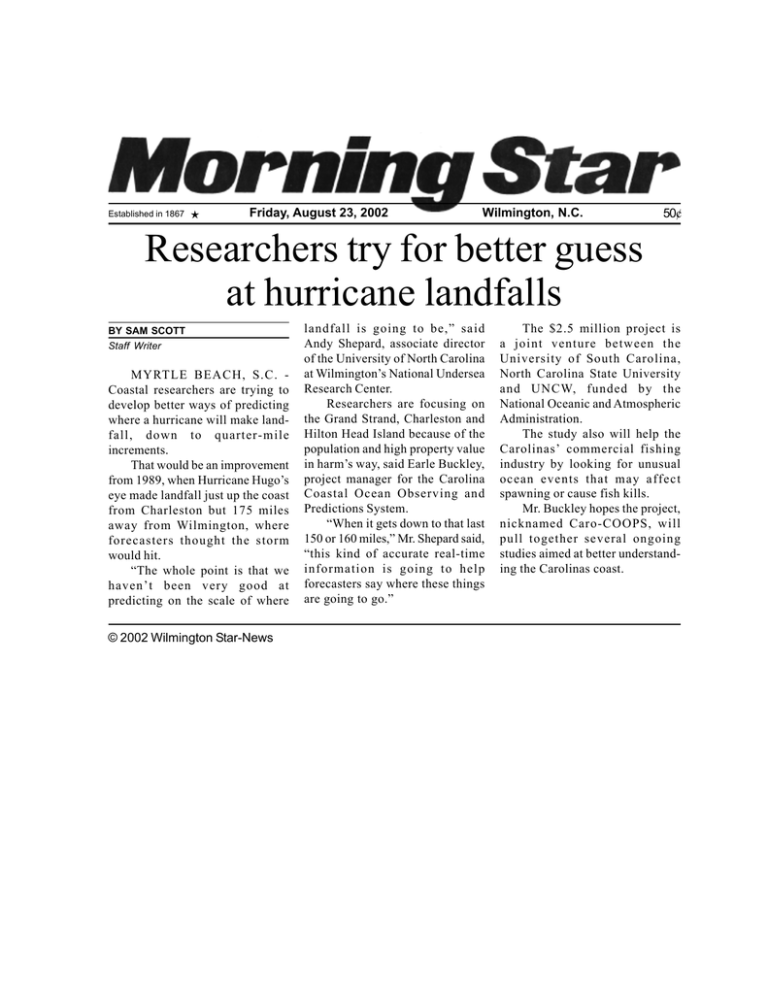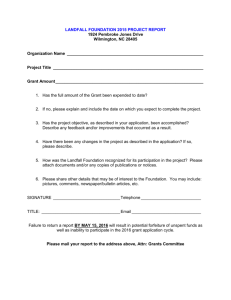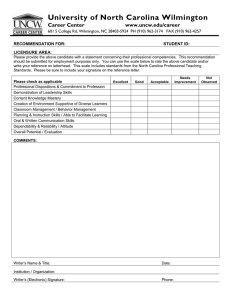Researchers try for better guess at hurricane landfalls
advertisement

Established in 1867 Friday, August 23, 2002 Wilmington, N.C. 50¢ Researchers try for better guess at hurricane landfalls BY SAM SCOTT Staff Writer MYRTLE BEACH, S.C. Coastal researchers are trying to develop better ways of predicting where a hurricane will make landfall, down to quarter-mile increments. That would be an improvement from 1989, when Hurricane Hugo’s eye made landfall just up the coast from Charleston but 175 miles away from Wilmington, where forecasters thought the storm would hit. “The whole point is that we haven’t been very good at predicting on the scale of where © 2002 Wilmington Star-News landfall is going to be,” said Andy Shepard, associate director of the University of North Carolina at Wilmington’s National Undersea Research Center. Researchers are focusing on the Grand Strand, Charleston and Hilton Head Island because of the population and high property value in harm’s way, said Earle Buckley, project manager for the Carolina Coastal Ocean Observing and Predictions System. “When it gets down to that last 150 or 160 miles,” Mr. Shepard said, “this kind of accurate real-time information is going to help forecasters say where these things are going to go.” The $2.5 million project is a joint venture between the University of South Carolina, North Carolina State University and UNCW, funded by the National Oceanic and Atmospheric Administration. The study also will help the Carolinas’ commercial fishing industry by looking for unusual ocean events that may affect spawning or cause fish kills. Mr. Buckley hopes the project, nicknamed Caro-COOPS, will pull together several ongoing studies aimed at better understanding the Carolinas coast.

